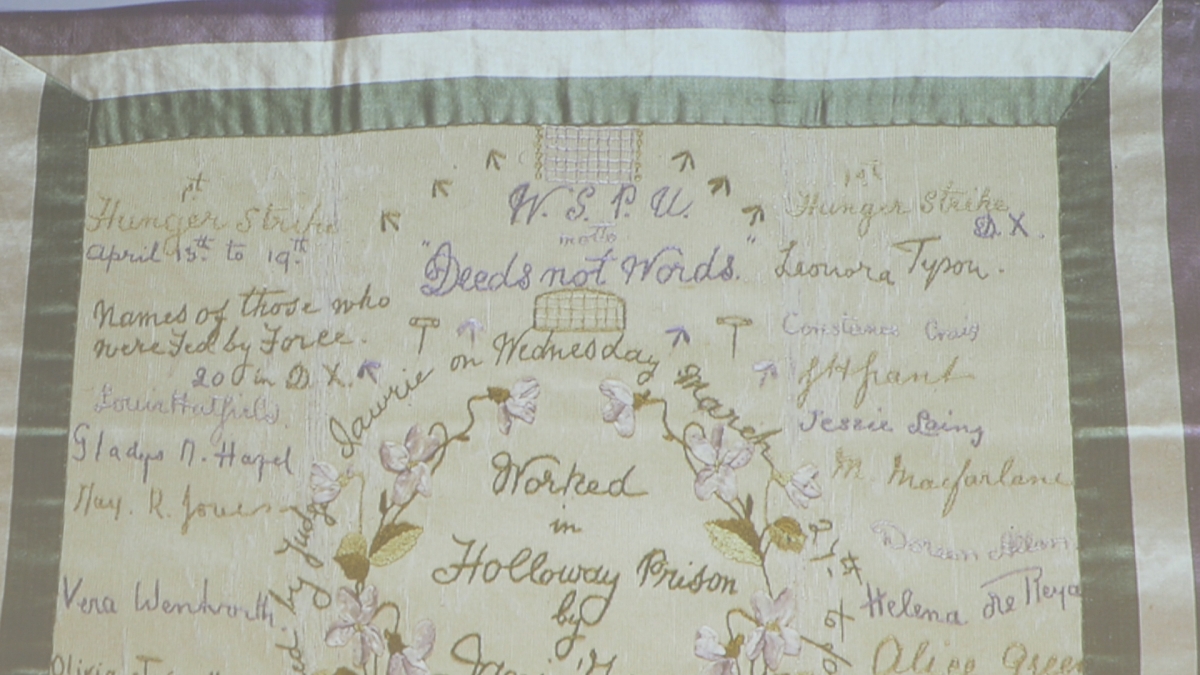Editor's note: This story is being highlighted in ASU Now's year in review. Read more top stories from 2018 here.
Needlework pieces are often seen as simple decorative heirlooms, but many were actually borne from matters of persecution and strife.
In a computer lab at Arizona State University's Department of English last week, ASU Professor Maureen Goggin pulled up a presentation of early 20th-century needlework items made by feminists and suffragettes, exploring the symbolic meaning behind needlework pieces from throughout history.
"What's important about this piece is that women during this time period were recorded by their prison number and not their name. And yet, this piece shows the names of all the women," GogginGoggin is also the director of writing, rhetorics and literacy. said, pointing to the item pictured at the top of this story. "The juxtaposition of decorative 'fancywork' and the vocalization of each women's name embroidered within the fabric exemplifies needlework as a space where both men and women can express themselves rhetorically."
Goggin said rhetoric is often seen as "empty words," but added, "Rhetoric has everything to do with how we communicate, and needlework was one way for many marginalized individuals to visually do just that."
It's a form of communication that has found renewed popularity among a number of activists today, but it's a practice with its roots stretching back into history. Next time you come across a piece of needlework, take a closer look and you may just find an abundance of subtext hidden within the fabric.
More Law, journalism and politics

A new twist on fantasy sports brought on by ASU ties
A new fantasy sports gaming app is taking traditional fantasy sports and mixing them with a strategic, territory-based twist.Maptasy Sports started as a passion project for Arizona State University…

'Politics Beyond the Aisle' series to explore the stories of public officials
In an effort to build a stronger connection between students and political and civic leaders, Arizona State University’s School of Politics and Global Studies hosted the first event of its new series…

ASU committed to advancing free speech
A core pillar of democracy and our concept as a nation has always been freedom — that includes freedom of speech. But what does that really mean?Higher education doesn’t have an agenda to curate a…


